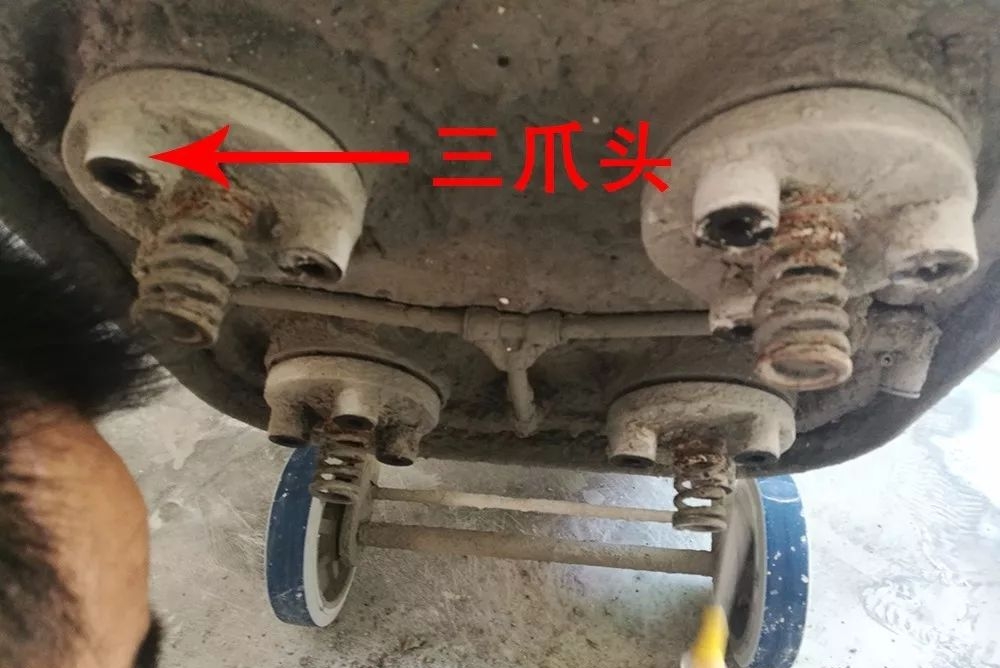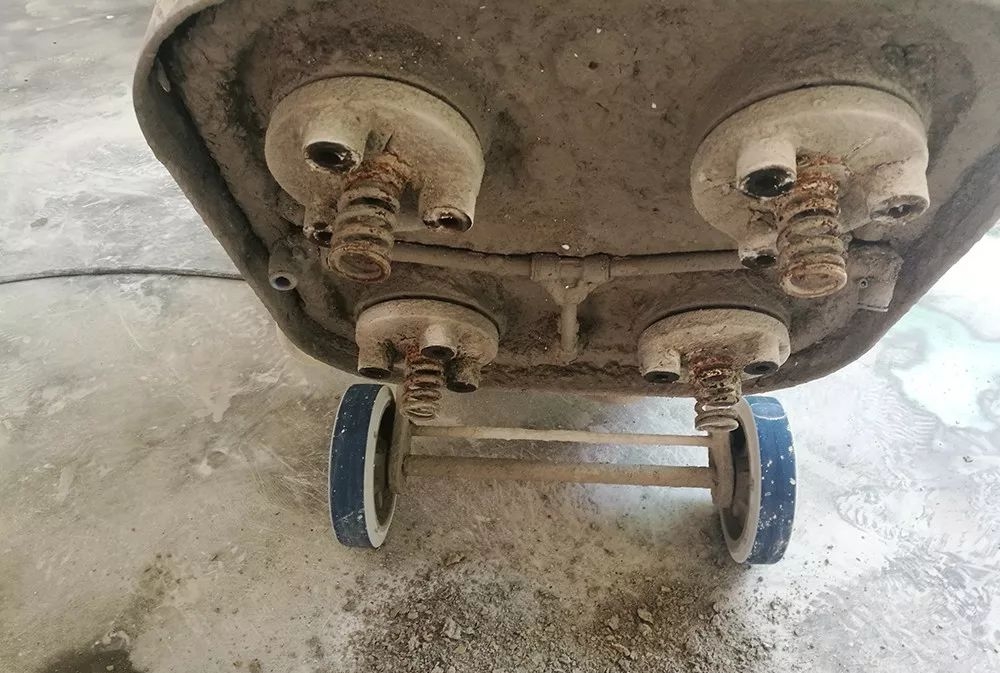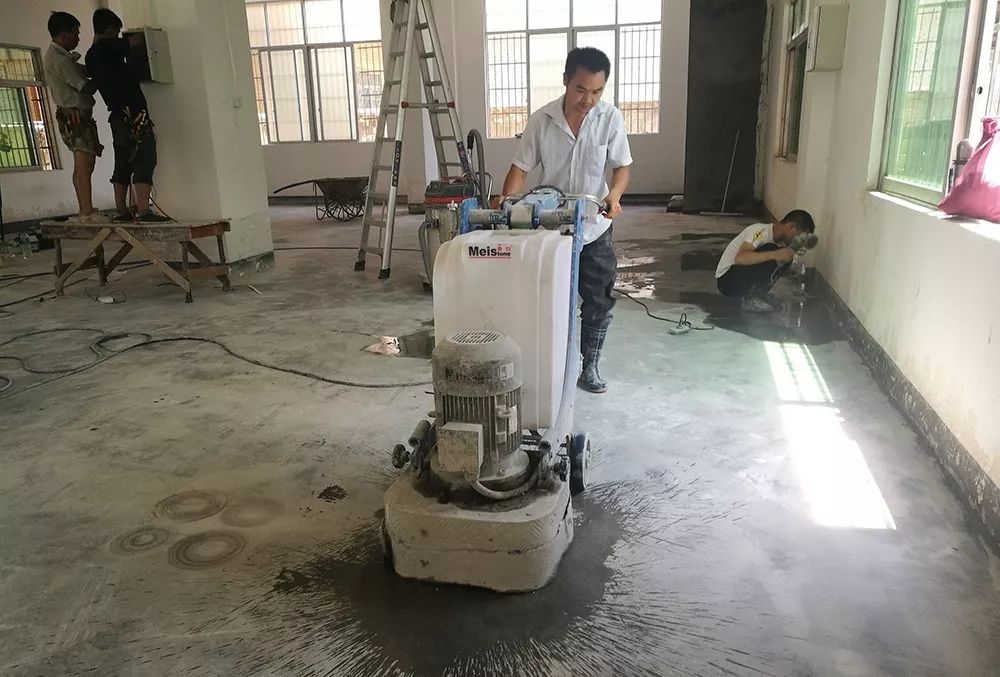Problem: After grinding the 1000 # grinding disc, there are always many scratches on the concrete floor that cannot be removed, and the wear and tear of the grinding disc is also uneven. Some grinding discs are thick on one side and thin on the other, and the machine always runs to one side. Why?
Solution: This is because after using the machine for a period of time, cement slag accumulates and hardens above the grinding disc and inside the three claw heads, causing blockage, and there is no compression space for the vibration damping rubber pad.
The grinding disc is no longer in the same plane. Or the loosening or deformation of the vibration damping gasket screws may cause the four grinding discs to be out of plane, meaning they are no longer perpendicular to the rotation axis. To clean the cement residue, adjust the grinding disc, or replace the fixing screws, adjust the four grinding discs back to the same plane.
1. On site inspection: Uneven thickness of grinding disc after grinding
2. On site inspection: The scratches on the 50 # grinding disc have not been repaired
3. The fixing screws of the vibration damping rubber pad are bent and deformed

4. Dismantling the grinding disc
5. Fixed screws for deformed and bent vibration damping rubber pads
6. Clean the cement hardened slag blocks inside the three claw head
7. Effect after cleaning
8. Installation and debugging of grinding disc
9. Trial ground floor
10. Scratches have been eliminated after grinding the floor
Summary of reasons why rough scratches on the ground cannot be eliminated by subsequent grinding procedures:
1. Above the grinding disc, the three claw heads are filled with hardened cement blocks, and the vibration damping rubber pad cannot be compressed and the grinding disc cannot be self adjusted to be flat.
2. In the past, during the rough grinding and leveling stage of 50 # or 30 # blade heads, the floor was severely pitted, and the grinding disc had strong resistance torque, resulting in deformation and bending of the fixing screws of the vibration damping rubber pad. As a result, the four grinding discs were not in the same plane or tilted. During grinding, after the grinding discs came into contact with the ground, the mechanical gravity (pressure) on each grinding disc was uneven, leading to uneven wear and tear of the grinding discs. The same grinding disc is thick on one side and thin on the other.
3. The vibration damping rubber pad above the grinding disc has been aged or weakened for a long time, losing its vibration damping elasticity and thus lacking self leveling and adjustment performance. (There is no such phenomenon in the above case)
4. Due to uneven pressure on 12 grinding discs or uneven pressure on 4 grinding discs, the grinding coverage is neglected, resulting in the next grinding disc being unable to repair scratches on the previous grinding disc (coarse grinding disc).
Based on the above reasons (phenomena), the correct solution for mechanical maintenance is:
1. Clean the hardened cement blocks on the grinding disc and inside the three claw heads.
2. Replace the fixing screws of the vibration damping rubber pad.
3. Replace the damping rubber pad. (The above case does not require replacement)
4. Adjust the flatness of the four grinding discs to ensure that they are in the same plane. The core principle of adjusting the flatness of the grinding disc: the looseness and tightness of the three fixing screws of the vibration damping rubber pad determine the distance between the grinding disc plane where the grinding discs are pasted in the corresponding or similar areas on the grinding disc and the edge surface of the machine box. When the distance between the area where each grinding disc is pasted and the sub surface of the box is equal, it means that these four grinding discs are in the same plane, that is, the grinding discs have been leveled.
In high school geometry, when each point on a single surface (each grinding disc) is equidistant from another surface (along the sub surface of the box), the two surfaces are parallel and each individual surface is in the same plane.
Image and text source: Meishi Machinery
Post time: Jun-27-2024








